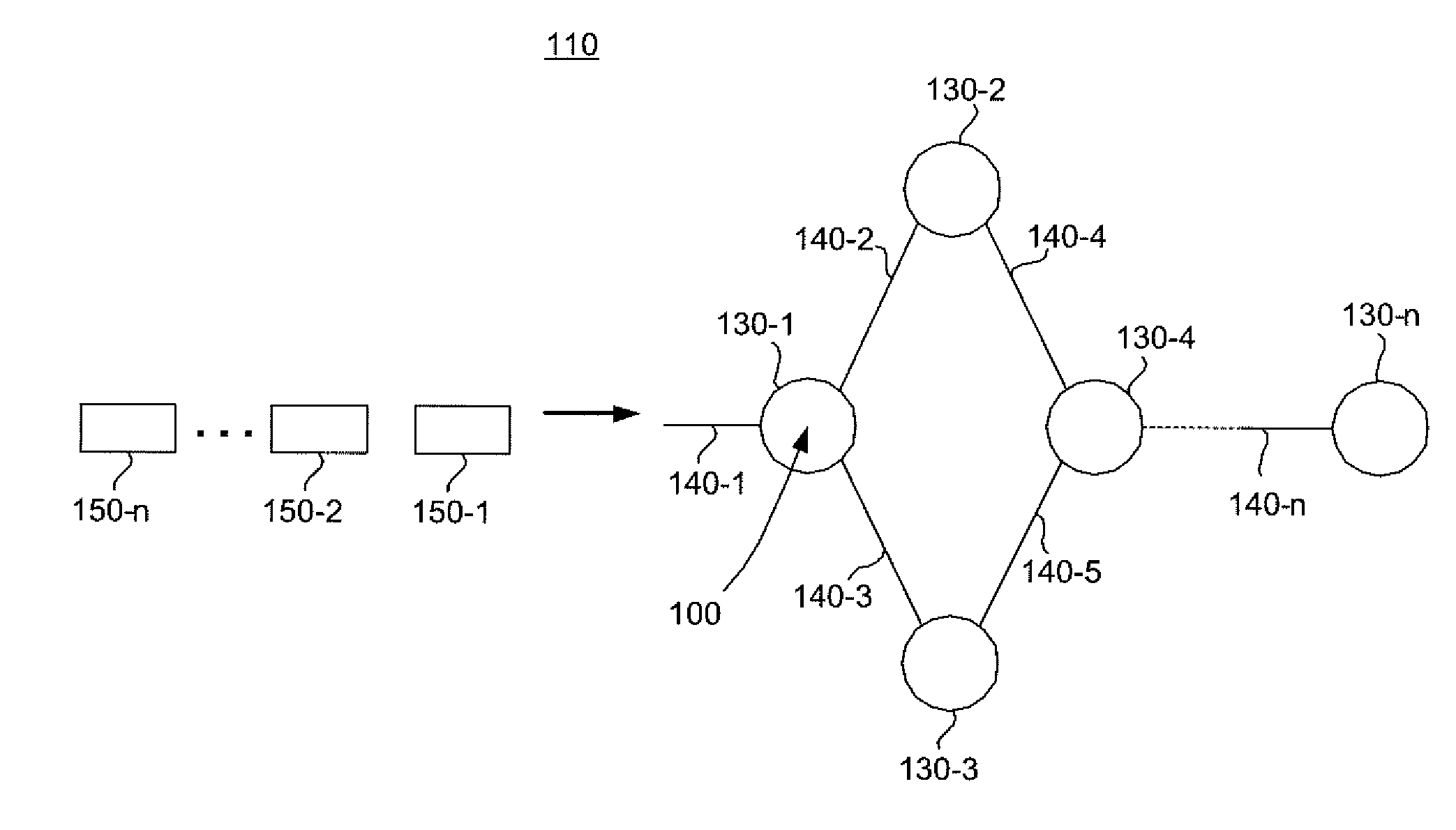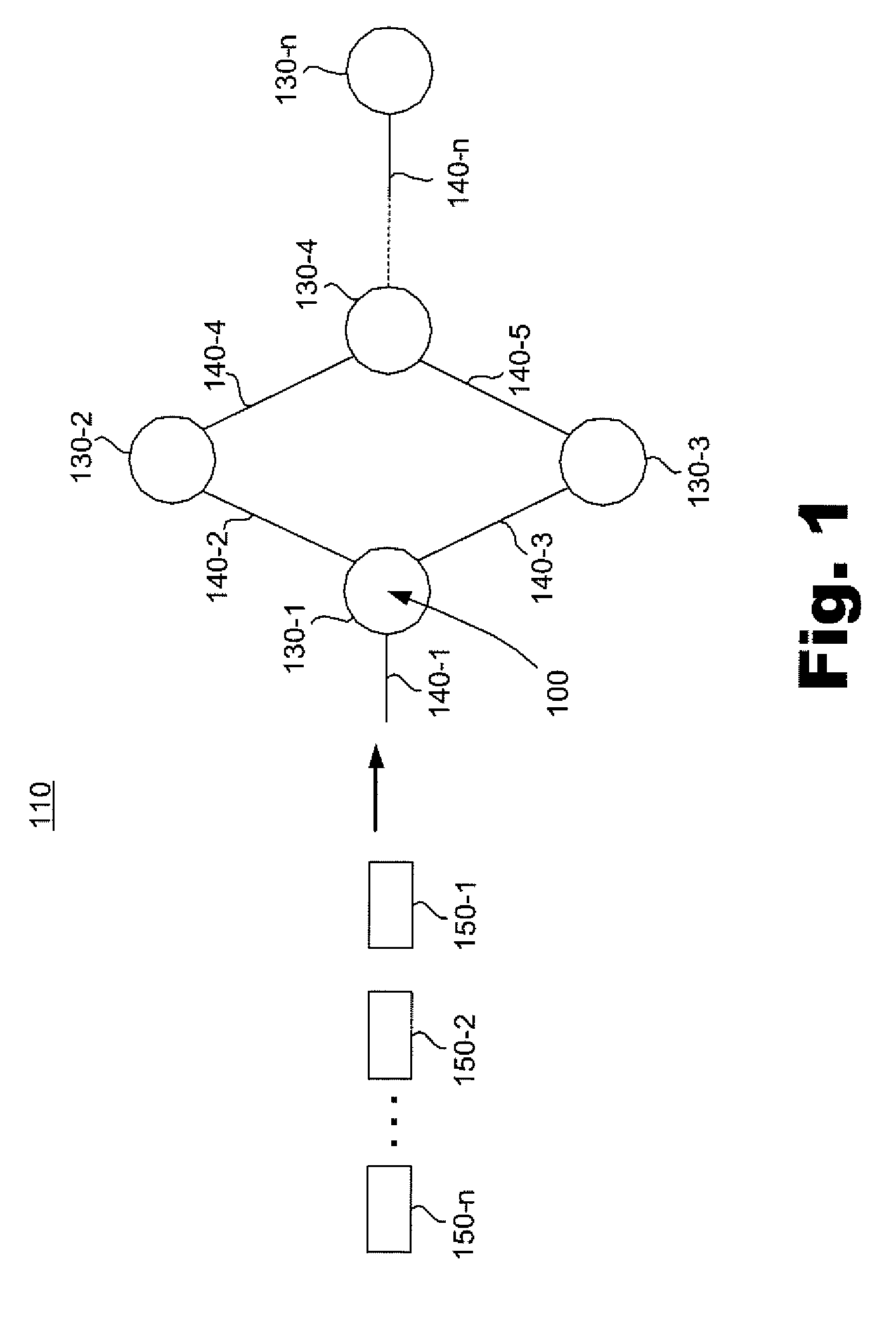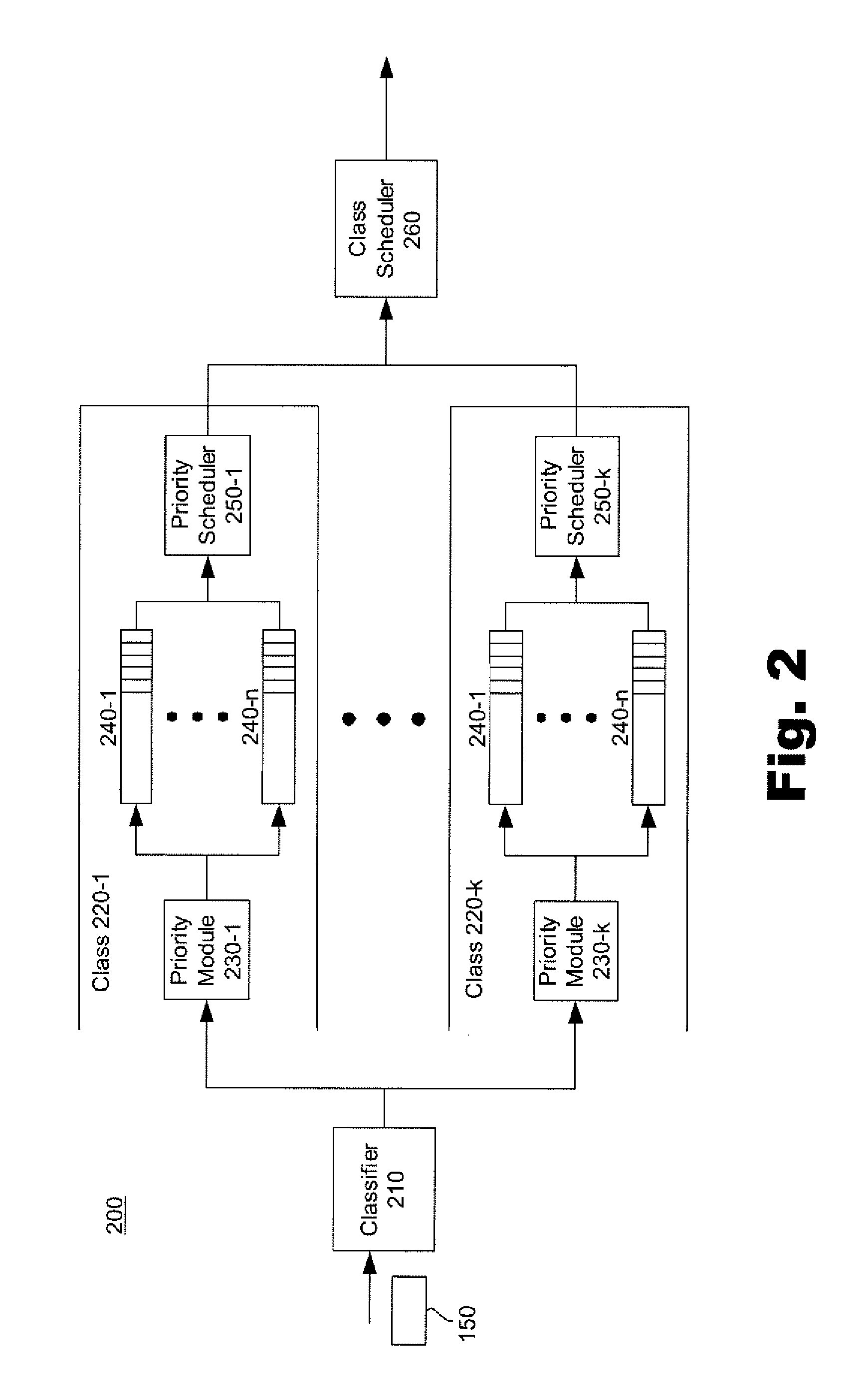Systems and methods for queue management in packet-switched networks
a packet-switched network and queue management technology, applied in data switching networks, frequency-division multiplexes, instruments, etc., can solve the problems of long delays for low priority traffic, congestion of low-priority queues, and packet routing over packet-switched networks
- Summary
- Abstract
- Description
- Claims
- Application Information
AI Technical Summary
Problems solved by technology
Method used
Image
Examples
Embodiment Construction
I. Overview
[0022]Systems and methods for managing queues in packet-switched networks are disclosed. More specifically, the systems and methods (collectively the “system”) provide for queue management that can drop packets from priority queues based on the priority levels of the packets. The system is able to drop incoming packets and / or packets already contained in the queues. For drop operations, the system is capable of operating across a set of the queues, including a group of multiple queues. For example, priority levels may be associated with the queues, and the system may consider occupancy levels of both a particular queue and all queues having higher priority levels than the particular queue. Groups of the priority queues may be dynamically determined based on priority levels of incoming packets. The queue or queues within the groups are then considered for drop operations. For example, the occupancy levels of the queues in the group may be considered to help determine wheth...
PUM
 Login to View More
Login to View More Abstract
Description
Claims
Application Information
 Login to View More
Login to View More - R&D
- Intellectual Property
- Life Sciences
- Materials
- Tech Scout
- Unparalleled Data Quality
- Higher Quality Content
- 60% Fewer Hallucinations
Browse by: Latest US Patents, China's latest patents, Technical Efficacy Thesaurus, Application Domain, Technology Topic, Popular Technical Reports.
© 2025 PatSnap. All rights reserved.Legal|Privacy policy|Modern Slavery Act Transparency Statement|Sitemap|About US| Contact US: help@patsnap.com



